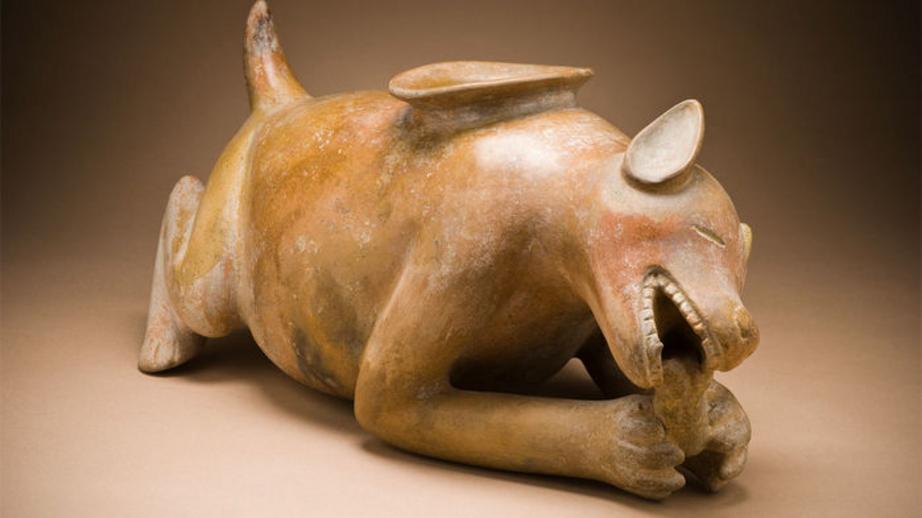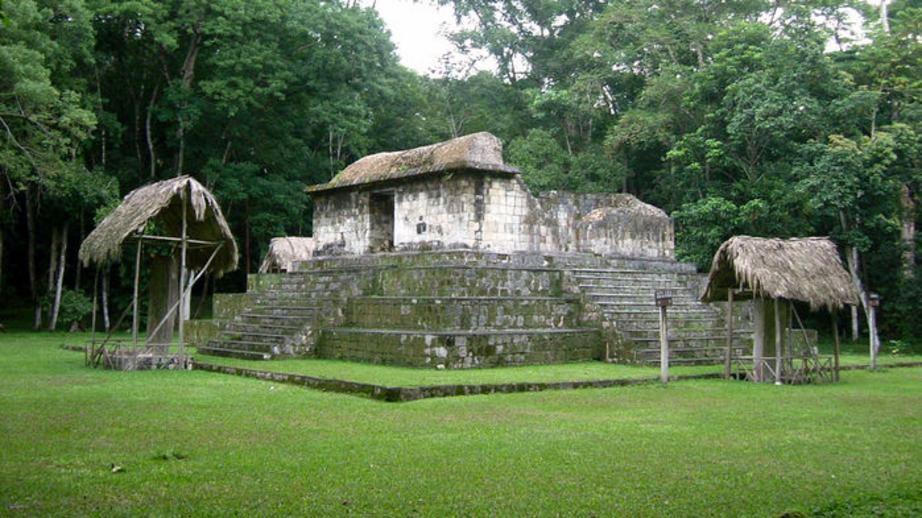Some dogs were royalty, others were dinner in ancient Mayan culture
If you were top dog in Mayan Latin America, you might be an honored guest at the king’s feast. But if not, you’d likely end up as the main course of someone else’s. That’s the conclusion of a new chemical analysis of animal bones found in a 3000-year-old Guatemalan city, which provides the earliest picture yet of how the ancient Mayans domesticated animals and treated those in their care.

Dogs that lived in the ancient Mayan city Seibal resembled those depicted in pottery from Colima state in Mexico. Wikimedia Commons
“It’s a well-done study,” says Henry Schwarcz, an anthropologist and professor emeritus who researches paleodiets at McMaster University in Hamilton, Canada, though he notes more work will be needed to confirm the findings. And the study may solve another mystery, he says: how the Mayans produced enough protein to feed the thousands who thronged their cities.
Between 1000 B.C.E. and 950 C.E., as many as 10,000 people lived in the important Mayan city of Seibal, located in today’s Guatemalan lowlands. Such big urban centers require lots of food, and the Mayans hunted deer, peccaries, and tapirs. But archaeologists have uncovered precious little evidence that the civilization practiced widespread animal domestication, which might have been needed to sustain such a big population, says Ashley Sharpe, an archaeologist at the Smithsonian Tropical Research Institute in Panama City.
Sharpe and colleagues joined the excavation of the site in 2010. Thus far, they have unearthed bones from 10 species, including deer, dogs, cats, opossums, peccaries, turkeys, and tapirs. An animal’s diet changes the isotopes—or versions of chemical elements—found in their bones and tooth enamel, giving researchers a clue as to what they were eating. Relatively low levels of carbon and nitrogen isotopes indicate a diet rich in forest plant material or prey that ate it. Higher levels of those isotopes suggest the animals ate mostly maize and therefore, were fed by humans.
Dozens of dogs and turkeys, as well as one large cat—possibly a jaguar—all had isotope levels indicating they were raised on maize-based diets. Radiocarbon dating reveals the dogs lived between 450 and 300 B.C.E., the earliest evidence yet for animal management and domestication by the Mayans, the researchers report today in the Proceedings of the National Academy of Sciences.
The canines were nearly all small and Chihuahua-like. Butchery marks previously found on ancient dog bones at other Mayan sites suggest the dogs were raised for slaughter. Although these particular bones showed no signs of butchery, Sharpe says it might not have taken much cutting to process the meat from these small dogs.

Two dogs from the Guatemalan highlands were found near this pyramid, which stood in Seibal’s central plaza. Sébastian Homberger/Wikimedia Commons (CC BY-SA 3.0)
The turkeys lived much later, between 175 and 950 C.E., meshing with other studies that have suggested the Mayans may have domesticated the gamebirds around that time, when dog remains were practically nonexistent at Seibal. So maize-raised dogs may have been a significant protein source for the Mayans before they domesticated turkeys, Sharpe says. Other studies have also concluded the Mayans probably ate dogs, but this is some of the strongest evidence so far that they may have been bred and fed for that purpose, she says.
But some dogs led more extraordinary lives. A pair that lived between 400 and 300 B.C.E. had strontium isotope levels that suggested they hailed not from Seibal, but from Guatemala’s volcanic highlands roughly 100 kilometers away. The dogs’ distant origin, plus their burial place near a large pyramid in Seibal’s central plaza, suggests they might have been part of Mayan ceremonies.
The maize-reared felines, which lived between 450 and 350 B.C.E., may have had a similar fate, Sharpe says. Mayan artifacts frequently depict kings posing with large cats. “It was probably a kind of show off item,” she says. “Like showing everyone, ‘Look, I’ve got a jaguar.’”
Lori Wright, an anthropologist at Texas A&M University in College Station who studies the Maya, says she is excited but not necessarily surprised to see the Mayans were domesticating animals so early. But she’s not fully convinced the Mayans were regularly raising dogs for slaughter. Without seeing butchery marks on bones with these maize-eating isotope signatures, it’s impossible to say for sure they were food, she says.
Schwarcz agrees, adding “They’ve got all the facts right,” but other explanations need to be ruled out. For instance, “Dogs are very well known to eat human feces,” he says, “which possibly could have contributed to the dogs eating maize signal they found.”
Sharpe admits that’s a possibility, but she thinks the dogs’ isotopic signature doesn’t quite match the signal you’d expect from dogs consuming maize-heavy feces. “Unfortunately, most of them were probably food dogs.”
